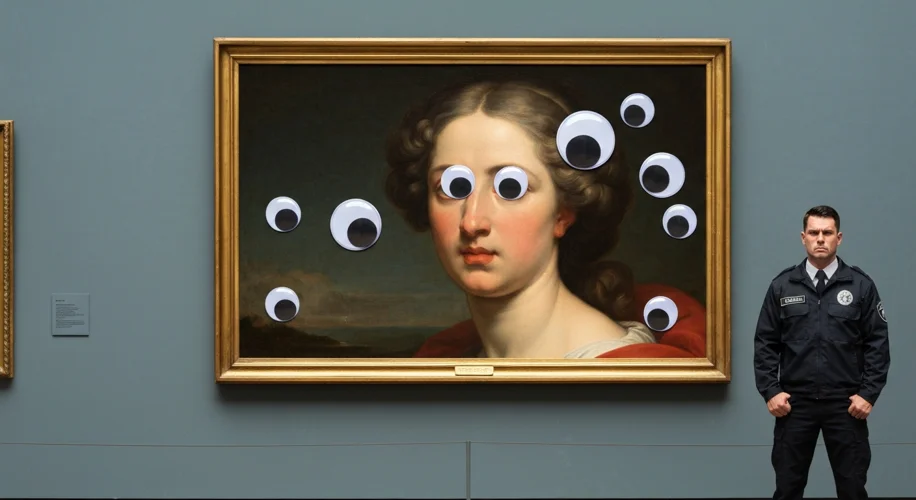In the hushed halls of art galleries, where silence is often as prized as the masterpieces themselves, a small, mischievous act in 2022 sent ripples of debate across the art world and beyond. An Australian teenager, armed with nothing more than a pair of adhesive plastic eyes, managed to spark a global conversation about art, vandalism, and the very definition of creative expression. The target? A priceless artwork, rendered comically, yet provocatively, with a pair of googly eyes.
The incident, which saw a young man charged by authorities, may seem like a trivial prank at first glance. However, the choice of target – a significant piece of art with substantial monetary and cultural value – elevated it beyond a simple act of mischief. It became a flashpoint, a moment where the reverence we hold for established art collided with the impulsive, often irreverent, spirit of modern youth culture.
Art, for centuries, has been a subject of interpretation and adoration, often locked away behind velvet ropes and hushed whispers. It’s a realm where value is determined by lineage, skill, and historical significance, often placing it on a pedestal seemingly inaccessible to the common person. The teenager’s act, however, brought the art back down to earth, or perhaps, placed it in a new, unexpected context. The googly eyes, a symbol of playful absurdity, transformed the serious visage of the artwork into something relatable, something almost…alive in its silliness.
This act immediately ignited a firestorm of opinions. On one side were the purists, the art historians and collectors, who decried the act as unadulterated vandalism. To them, it was a blatant act of disrespect towards artistic heritage, a defacement of something precious and irreplaceable. They argued that such actions undermine the cultural institutions that preserve and celebrate art, and that the teenager’s motivations, whatever they might be, did not justify the damage.

On the other side were those who saw a more nuanced, perhaps even artistic, commentary. They proposed that the teenager’s act was not mere vandalism but a form of ‘culture jamming’ or ‘street art.’ In this view, the googly eyes were an intervention, a disruption of the passive consumption of art. The artist, in this instance, was not trying to destroy but to engage, to force viewers to reconsider their relationship with the artwork and the gallery space. Was it an act of rebellion against the elitism of the art world? A commentary on the perceived stuffiness of traditional galleries? Or simply a teenager’s impulsive desire to make their mark?
The legal repercussions were swift, with the teenager facing charges. This underscored the clear legal distinction between artistic expression and vandalism, regardless of intent. The value of the artwork, its historical context, and the rules of the institution all played a role in shaping the response.
Yet, the incident lingered in the public consciousness. It invited a broader discussion: If art is meant to provoke thought and emotion, did this young person, however unconventionally, succeed? Did the addition of googly eyes make the artwork more accessible, more engaging for a wider audience? Or did it irrevocably damage its integrity and value?
This event serves as a potent reminder that the line between vandalism and artistic commentary can be blurry, subjective, and often sparks heated debate. It forces us to question who decides what is valuable, what is art, and what is simply a desecration. While the courts focused on the act of damage, the conversation surrounding the googly eyes continues, a testament to the enduring power of art, even when it’s given a pair of absurd, plastic eyes.
Ultimately, the ‘googly eyes incident’ might be remembered not just as a case of vandalism, but as a peculiar, modern footnote in the long, complex history of how societies interact with, create, and interpret art. It was a moment when a simple prank, placed on a canvas of high culture, forced us to look at art, and perhaps ourselves, with a slightly more amused, and certainly more critical, eye.

